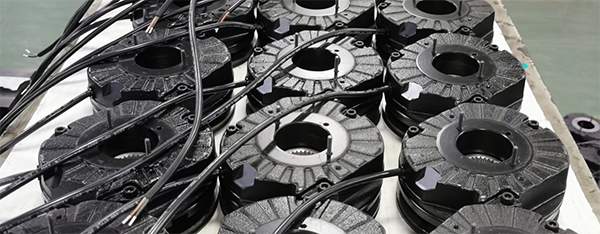sales@reachmachinery.com
In the industrial machinery sector, cranes are the important type of heavy lifting operations. These massive machines rely on various components to ensure safety and efficient performance, and one crucial component is the electromagnetic brake system. In this article, we will delve into the working principles and adjustment techniques of electromagnetic brakes in cranes, elucidating how they contribute to the smooth operation of these powerful lifting devices.
The Importance of Electromagnetic Brakes in Cranes:
Cranes are designed to handle substantial loads, making their braking system a critical safety feature. Electromagnetic brakes play a vital role in controlling the stopping of cranes. Understanding their principles and correct adjustments are essential for maintaining safety, operational efficiency, and preventing costly downtime.
Working Principles of Crane Electromagnetic Brakes:
When the stator of the electromagnetic brake is de-energized, springs exert force on the armature, clamping the friction disc assembly between the armature and the flange, generating braking torque. At this point, there is a gap “Z” between the armature and stator.
When it is necessary to release the brake, a direct current power source should be connected to the stator, and the armature will move towards the stator due to electromagnetic force. As the armature moves, it compresses the springs, releasing the friction disc assembly and disengaging the brake.
Electromagnetic brakes for cranes
Adjustment of Crane Brake System:
Clearance Adjustment: When the brake is released, a small clearance should be maintained between the armature plate and the brake disc to ensure free movement. Typically, this clearance falls within the range of 0.25 to 0.45 millimeters. Properly setting this clearance is crucial for the effective operation of the brake.
Torque Calibration: To ensure the brake can safely stop the crane‘s load, the brake must be calibrated to provide the required braking torque. This adjustment depends on the crane’s load capacity and operating conditions.
Wear Monitoring: Regularly inspect brake components for signs of wear.
Temperature Considerations: Electromagnetic brakes generate heat during operation. Monitoring and controlling operating temperatures are vital to prevent overheating, which can lead to reduced brake efficiency and premature wear.
Routine Maintenance: Regular maintenance, including cleaning and lubricating brake components, is essential for ensuring smooth and reliable operation.
Conclusion:
Electromagnetic brake systems are critical in the realm of crane operations, responsible for safely handling large loads. Understanding their working principles and implementing correct adjustment techniques are crucial for crane operators, maintenance teams, and safety personnel. By adhering to these principles, we can ensure that cranes equipped with electromagnetic brakes continue to be reliable assistants in the industry, promoting safety and efficiency in heavy lifting operations.
Post time: Oct-31-2023

